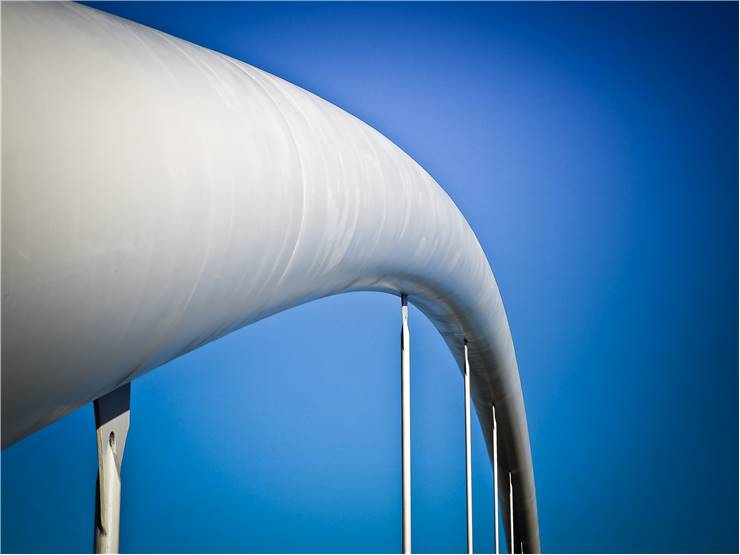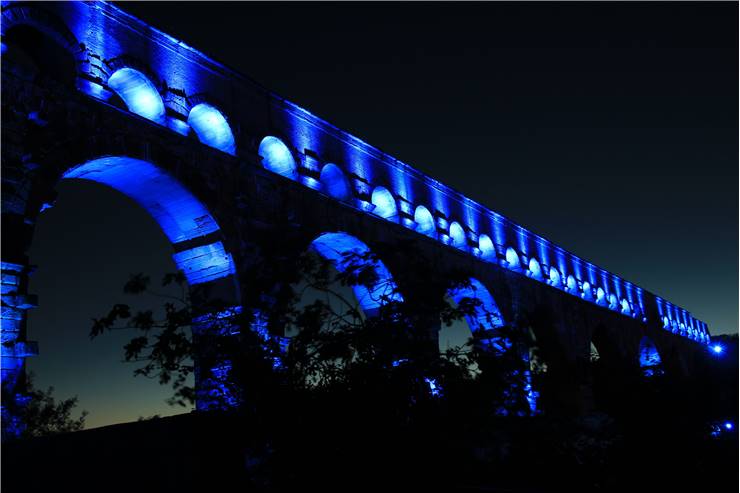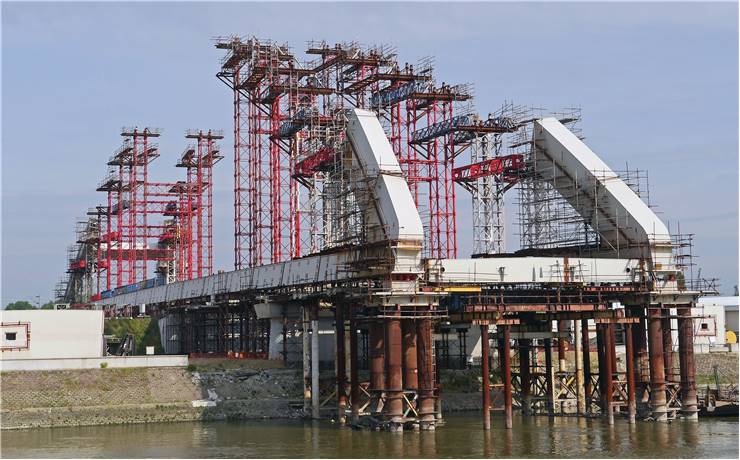Structure, Components and Parts of Bridge
Since the use of first simple bridges made from a single beam that had to endure all the forces of tension, compression, torsion and shear forces by itself, engineers and architects tried to develop new and better techniques for spanning the gaps between one point of terrain to another. Eventually, the entire engineering field was formed, and dozens upon dozens of bridge designs were created utilizing many components, parts and brand new terminology that describe them.
All the basic components are placed inside three main bridge areas – Foundation (which holds the shallow or deep base of the bridge and transfers it’s load to the bearing strata, this includes foundations below the main span of the bridge and the abutments below starting points of the bridge), Substructure (piers, abutments, spandrels, caps, bearings, and other components that holds the upper construction) and Superstructure (all the parts of the bridge that are mounted on top of the supporting substructure system, it covers elements such as decking, girders, slab, and everything placed above the main deck such as posts, steel truss system, bridge girder, cable-stayed system, cable suspended systems and more).

Three main bridge areas are Foundation, Substructure, and Superstructure.
The components of the bridge are picked to fit not only its use case scenario (pedestrian, highway, railway, transit or industrial bridges) but also location on which it is built, the span between its main structural beams and their basic structure (arch, beam, cantilever, cable-stayed, suspension or other).
Main components of the modern bridges are:
Abutment – Endpoints of the bridge. They are reinforced so that they can endure intense lateral pressures.
Pile (also known as beam, footing, and pier) – Reinforced concrete post that is driven into the ground to serve as the leg or support for the bridge. The distance between piles is calculated so that is can support the rest of the structure that will be laid on top of them.
Cap – Cap sits on top of the pile beam, providing additional support and dispersing the load to the piles below. The combination of Pile and Cap elements is called Bent.
Girder or Span – One of the main components of the bridge that connects all the Piles beams. It can consist from multiple simple spans, a single continuous span that is supported by multiple beams, cantilever spans and cantilever spans with the suspended span between them. They are usually made from metal or reinforced concrete and also can be made in the form of haunches girded that can carry more load. Girder sections are typically not made from a simple block of material but are made from truss network (or Orthotropic beams) that increases their resistance to load. Girders can also be used as a part of rigid frame network where they are fully connected with frame legs (which can be inclined or in V shape).
Superstructure truss network – Truss network that supports travel surface can be made in three basic ways – Deck truss where traffic flows on top of truss network, Pony truss where truss network flows between two parallel walls of trusses, and Through truss that adds additional cross-braced truss network above and below the traffic.
Deck beam – Simple continuous decks are made from metal or reinforced concrete. They consist from sub-components such as approach slab (that part that connects main bridge decking with the ground on both sides of the bridge), expansion joint, drainage scupper, curb, running surface, footpath.
Barriers – Sides of the bridge decks usually have additional barrier components such as railings, handrails and ground fixtures.

Arch – Arches on the bridges are distinguished by the number of hinges they have (usually between zero or three) which determine how much stress and load they can safely carry, and the type of material they are constructed (solid material, truss system). Arches below the bridge are called spandrel-braced (cantilever) or Trussed deck arch. Arch bridges can also use suspension bridges where the arch is made from truss system (tied arch, or bowstring bridge).
Spandrel – Spandrels are the almost triangular space between the main pillar of the bridge and decking. Stone bridges use filled “closed” spandrels deck arches, while modern bridges made from metal use open spandrel deck arch configurations.
Truss – Framework made by connecting triangles and other forms that share load and stress forces across its entire structure. They are commonly separated into several categories such as simple truss (King and Queen posts), covered bridge truss (multiple kingpost truss, Howe truss, long truss, Burr arch truss, town lattice truss, Haupt, Smith, Partridge and Child truss), Pratt truss (and it’s many variations), Whipple truss, Warren truss variations, Howe truss, Lenticular truss, Fink truss, multiple Cantilever truss variations, and suspension truss arches.
